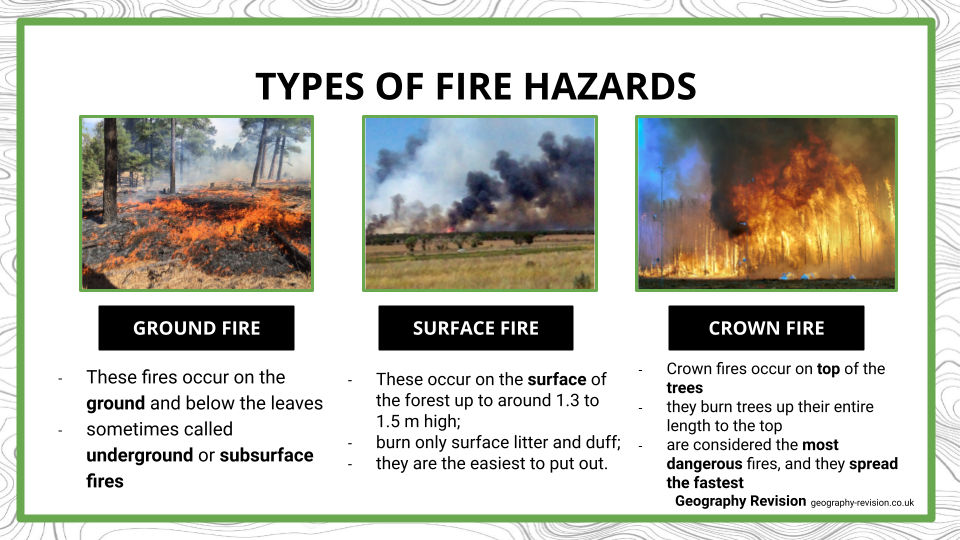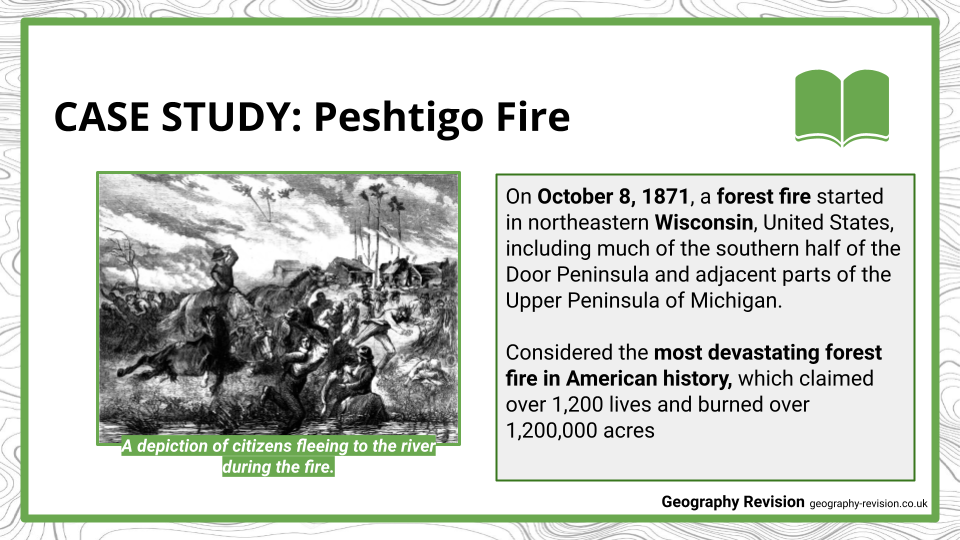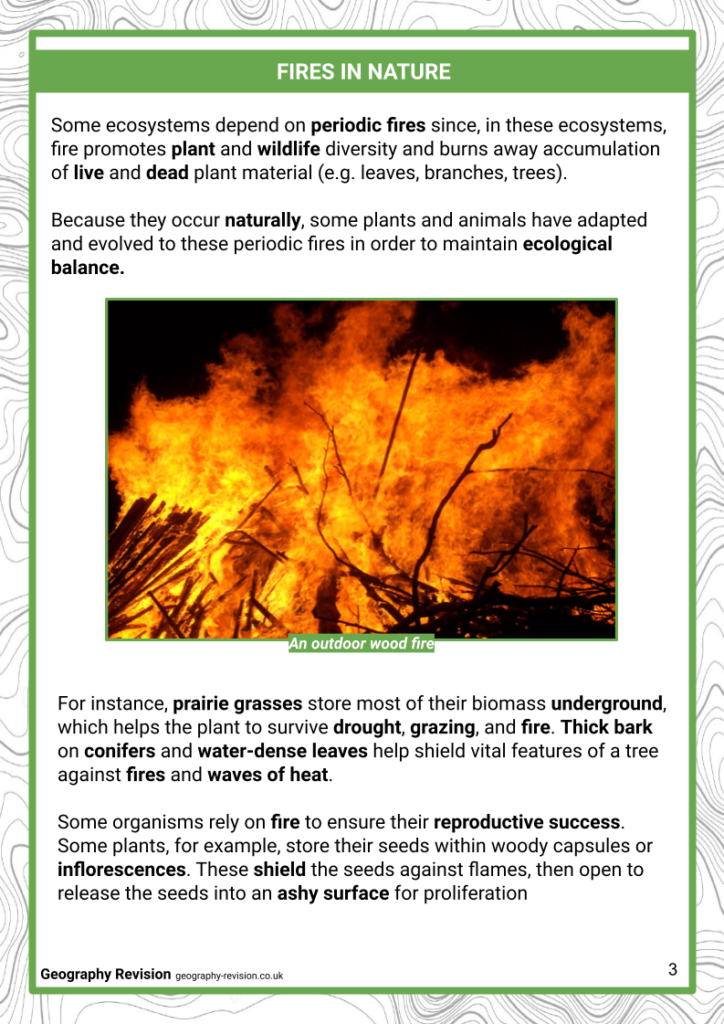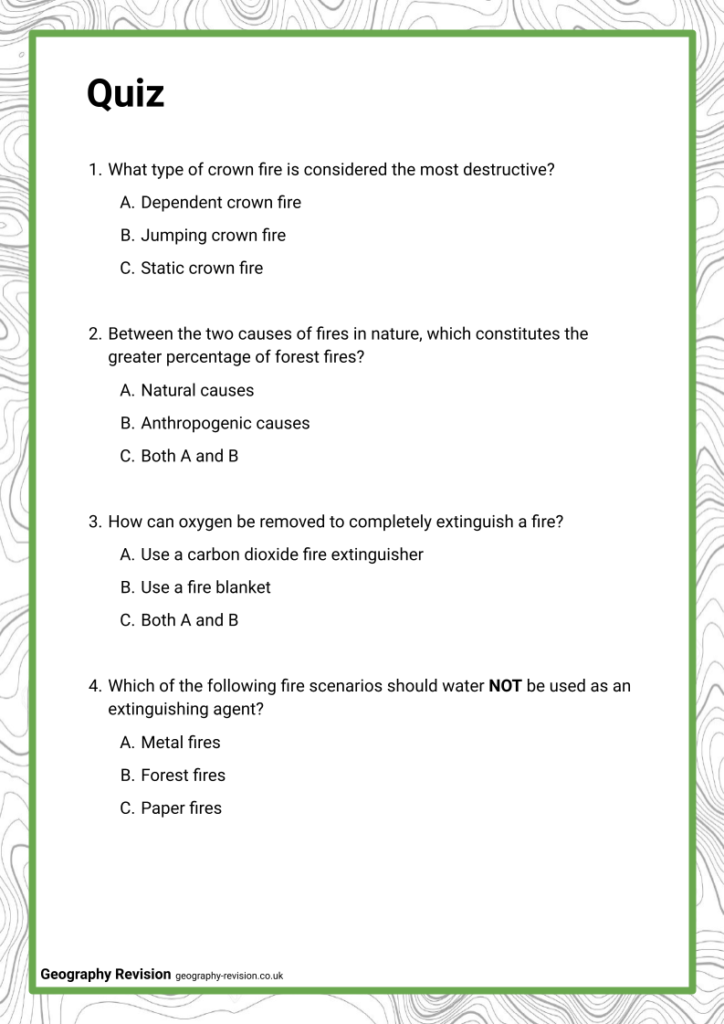Download the Introduction to Fire Hazards Module
This module contains:
- An editable PowerPoint lesson presentation
- Editable revision handouts
- A glossary that covers the key terminologies of the module
- Topic mindmaps for visualising the key concepts
- Printable flashcards to help students engage active recall
- A quiz with an answer key to test knowledge and understanding of the module
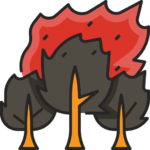
Fire Hazards: Introduction
In nature, there are some ecosystems that rely on fire in order to maintain balance: Fires improve diversity by clearing out an accumulation of living and dead plant matter, while some organisms rely on fire to ensure the success of their species. Fire is also extremely useful in a human context, such as land clearing and generating heat and power. But, sometimes, things can go out of control and accidental fires and wildfire are the results and the impact can affect thousands of acres of land, people's homes and livelihoods, and can even cost lives.
This A-Level Fire Hazards module will enable students to:
- Define what fires in nature are.
- Identify the different kinds of fires in nature.
- Identify the different causes of fires in nature.
- Know the different classes of fire hazards.
- Understand the role of climate change in wildfires.
- Explain how fire hazard damage can be mitigated.
More Natural Hazards Modules
Mass Movement is one lesson in our Natural Hazards module. The other theory lessons can be found below:
Mass Movement
Volcanic Hazards

